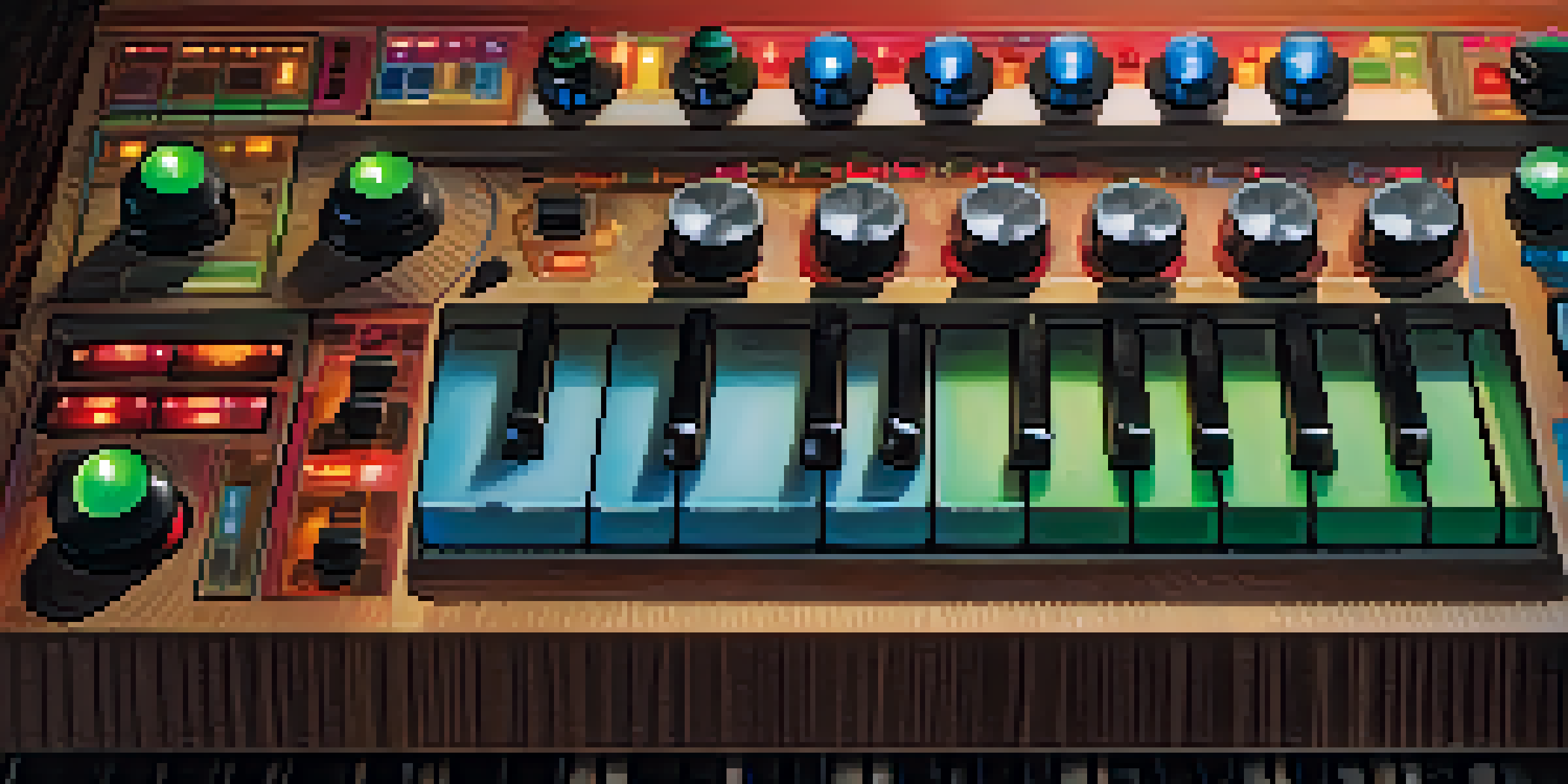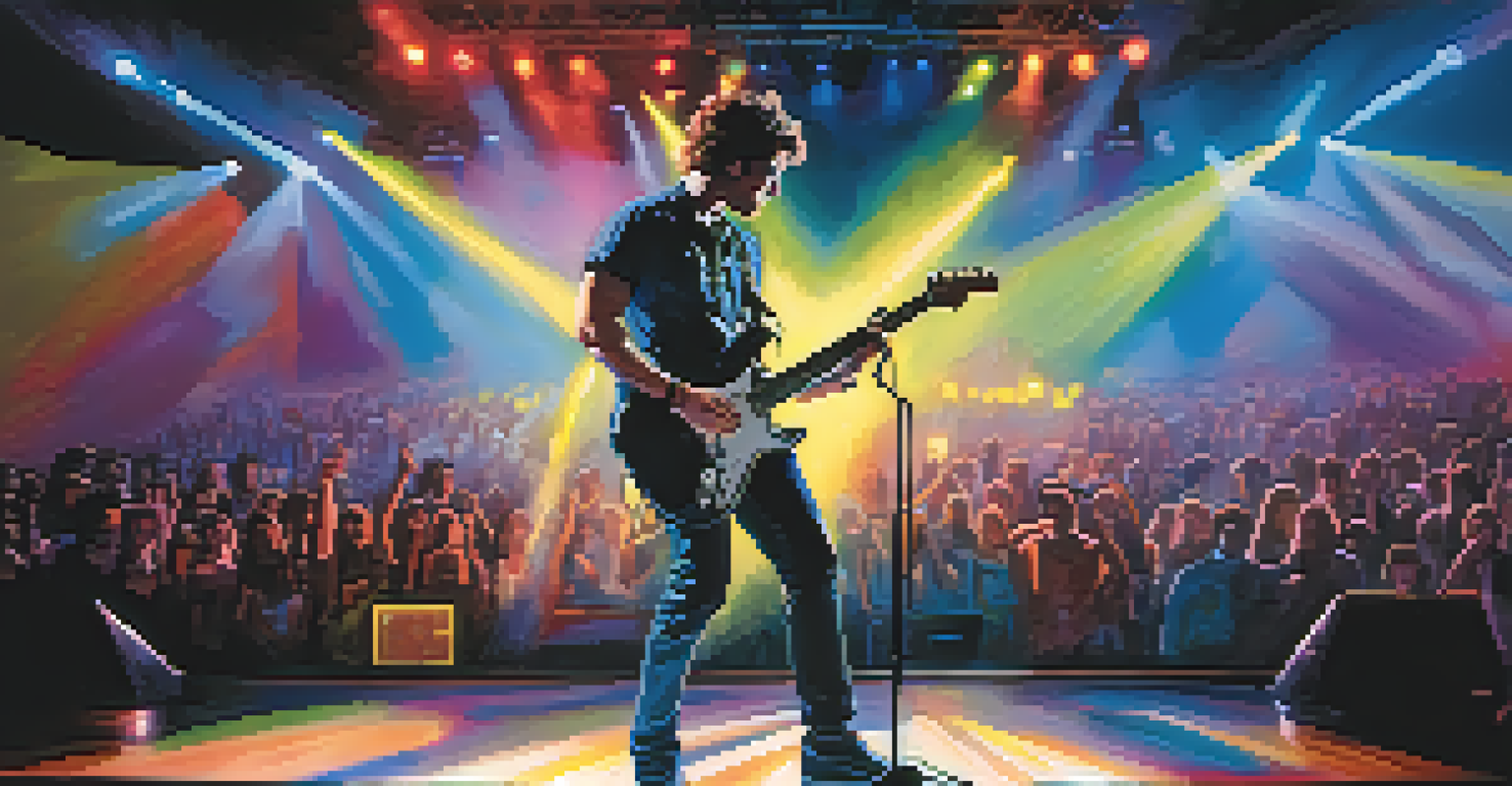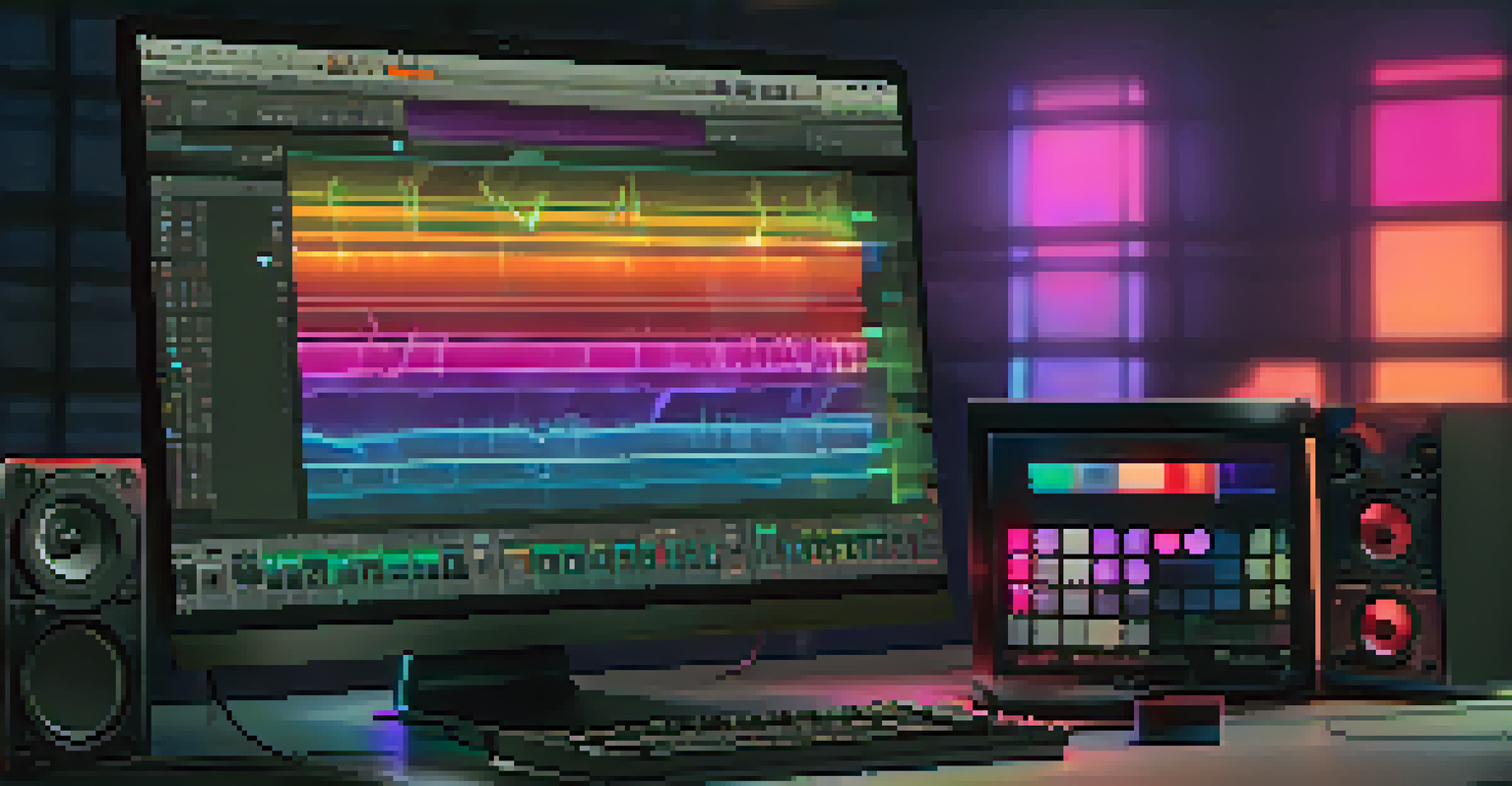Using MIDI Controllers to Expand Guitar Playing Techniques

Understanding MIDI Controllers and Their Benefits
MIDI controllers are versatile tools that can transform how guitarists create music. By sending digital signals to software or hardware instruments, they allow for a vast array of sounds at your fingertips. Imagine being able to switch from a classic guitar tone to an orchestral sound with a simple touch; that's the power of MIDI.
The beauty of music is that it connects people, and technology can enhance that connection.
For guitarists, using a MIDI controller opens up new avenues for expression. It can complement your guitar playing by adding layers, effects, and even backing tracks. This versatility can help you break out of creative ruts and explore uncharted musical territories.
Moreover, MIDI controllers are not just for studio use; they can also be used in live performances. Many musicians are now integrating them into their setups, offering audiences a richer and more diverse sound. With the right approach, you can create a captivating experience that engages listeners on multiple levels.
Integrating MIDI Controllers into Your Guitar Setup
Integrating a MIDI controller into your guitar setup may seem daunting, but it can be quite simple. Start by connecting your controller to your computer or MIDI-capable device, ensuring that you have the right software installed. Many digital audio workstations (DAWs) are user-friendly and come with built-in support for MIDI.

Once connected, experiment with different sounds and settings to find what resonates with your style. You can layer your guitar tracks with synths or drum machines, creating a fuller sound. This experimentation is where the magic happens; you’ll discover new techniques and styles that can elevate your playing.
MIDI Controllers Enhance Creativity
MIDI controllers allow guitarists to explore new sounds and layers, breaking creative barriers in music composition.
Don’t be afraid to play around with your MIDI controller during practice sessions. By incorporating it into your routine, you'll become more comfortable with the technology and uncover new ways to express your musical ideas. This can lead to a more dynamic performance, both live and in the studio.
Exploring Unique Sounds with MIDI Controllers
One of the most exciting aspects of using MIDI controllers is the ability to create unique sounds. Instead of being limited to traditional guitar tones, you can explore everything from electronic beats to ambient soundscapes. This opens up a world of possibilities for your compositions.
Music brings people together, and with the right tools, you can create a symphony from your own imagination.
For instance, you can use a MIDI controller to trigger samples or effects that can complement your guitar playing. Think of adding a lush pad sound under a solo, creating an atmospheric backdrop that enhances your performance. Such layers can make your music more immersive and engaging.
Moreover, many MIDI controllers come with built-in features that allow for real-time manipulation of sounds. You can tweak parameters like pitch, modulation, and effects on the fly, allowing for spontaneous creativity during performances. This flexibility can be a game-changer for any guitarist looking to push their boundaries.
Creating Backing Tracks with MIDI Controllers
MIDI controllers can also be invaluable for creating backing tracks that support your guitar playing. By programming drum patterns, bass lines, or even full arrangements, you can build a complete song structure. This not only enhances your practice sessions but can also be used in live performances.
Imagine jamming with a full band, all created from your MIDI controller. You can set the tempo, adjust the key, and layer in various instruments, effectively becoming a one-person band. This can be especially beneficial for solo artists who want to showcase their talent without needing multiple musicians.
Seamless Integration in Performances
Incorporating MIDI controllers in live shows enables musicians to switch between diverse sounds, captivating audiences with dynamic performances.
Additionally, creating backing tracks can help you improve your timing and rhythm. As you play along with your programmed tracks, you’ll develop a better sense of groove and dynamics. This practice can translate into enhanced performance skills, making you a more versatile guitarist.
Enhancing Live Performances with MIDI
Incorporating MIDI controllers into your live performances can take your shows to the next level. Instead of sticking to just your guitar, you can engage the audience with a variety of sounds and effects. This not only keeps your performance dynamic but also showcases your versatility as a musician.
Imagine being able to switch between guitar solos, synth leads, and even vocal effects seamlessly during a live set. MIDI controllers allow for smooth transitions between these sounds, captivating your audience. This kind of versatility can set you apart from other musicians and create memorable live experiences.
Moreover, MIDI controllers can help you manage your effects and sounds on stage. With the right setup, you can control everything from pedals to software instruments, reducing the need for a complicated rig. This simplicity can help you focus on what really matters: connecting with your audience through your music.
Learning New Techniques with MIDI Controllers
Using MIDI controllers can also be a fantastic way to learn new guitar techniques. Many software programs come with tutorials and exercises that can help you expand your skills. By practicing with a MIDI controller, you can develop a more diverse musical vocabulary.
For example, you might find yourself experimenting with different styles, such as fingerpicking or slide guitar, while layering sounds with your MIDI controller. This encourages you to think outside the box and apply new techniques in creative ways. The result? A more well-rounded guitarist who can adapt to various genres.
Improving Skills with MIDI Tools
Using MIDI controllers can help guitarists learn new techniques and reinforce timing, ultimately making them more versatile musicians.
Additionally, playing along with MIDI backing tracks can help reinforce your timing and improvisation skills. You’ll learn to listen and respond to changes in music, a crucial skill for any performer. As you grow more comfortable with these techniques, you may find yourself becoming a more confident and expressive player.
Tips for Getting the Most Out of Your MIDI Controller
To maximize your experience with MIDI controllers, start by familiarizing yourself with their features. Take the time to read the manual or watch tutorials online; understanding your gear can significantly enhance your creativity. This foundational knowledge will allow you to explore its full potential without feeling overwhelmed.
Another tip is to integrate your MIDI controller into your songwriting process. Use it to sketch out ideas, experiment with different sounds, and develop arrangements. This approach can lead to unexpected musical discoveries and inspire your creativity in ways you may not have imagined.

Lastly, don’t hesitate to collaborate with other musicians who use MIDI controllers. Sharing knowledge and techniques can open up new perspectives on your playing. Plus, working with others can lead to exciting projects that combine your guitar skills with their unique approaches to MIDI, resulting in innovative music.